#task: chickasaw
Text
Hey folks! As of recent events Natalie is no longer involved with this blog and I've found a new admin, until we get things up and running again the new unofficial task will be to focus on providing the community with Indigenous resources! I've made a masterlist of resources that were lost HERE and of course there are several tasks dedicated to Indigenous people under the cut:
PLEASE NOTE THAT THE OLDER ONES NEED UPDATING!
#053: The Iroquois Confederacy
#054: The Anishinaabe
#055: The Navajo
056: The Iron Confederacy
#057: Great Sioux Nation
#064: Apache
#065: Inuit
#066: The Blackfoot Confederacy
#067: Seminole
#068: Metis
#072: Choctaw
#086: Māori
#094: Tonga
#103: Tahiti
#106: Chickasaw
#117: The Wabanaki Confederacy
#118: Shoshone
#119: Hopi
#120: O'odham
#121: The Powhatan Confederacy
127: Imazighen
#128: Hmong
#156: Indigenous Peoples of Taiwan
#169: Comanche
#170: Lumbee
#171: Cheyenne
#172: Nez Perce
#173: Yaqui
#211: Arapaho
#212: Crow
#213: Yupik
#214: Paiute
#260: Quechua
#261: Dene Peoples
#262: Taino
#263: Lenape
#274: Indigenous Peoples of the Philippines
#291: Mixed Indigenous American and Asian
#292: Mixed Pacific Islander and Asian
#293: Mixed Indigenous American and Black
#300: Alaskan Athabaskan Peoples
#301: Maya Peoples
#302: Interior Salish Peoples
#308: Kamilaroi People
#314: Two-Spirit Faceclaims
#315: Wiradjuri
2 notes
·
View notes
Text
Gunship iii bombing

#GUNSHIP III BOMBING FULL VERSION#
#GUNSHIP III BOMBING SIMULATOR#
#GUNSHIP III BOMBING DOWNLOAD#
For more info about the Gunship-III Vietnam War Aircombat series, visit developer's page or at Features: 360 degrees virtual cockpit. The 2000lbs bomb loadout makes bombing so simple even a caveman could do. Players could play online with other aircraft pack. This game is an expansion pack of the Gunship-III Vietnam War series. * Multiplayer with live chat, fly with people around the world.įeel free to join Gunship III USAF Virtual Airforce on Facebook. This game is an expansion pack of the Gunship-III Vietnam War series. Specifications AC-119G Shadow AC-119K Stinger Length: 86 feet, 5.75 inches: Height: 26 feet, 7.75 inches: Wing Span: 109 feet, 3.25 inches: Weight (Maximum) 62,000.
#GUNSHIP III BOMBING FULL VERSION#
* Full version features 2 flyable airplanes: A-1 Skyraider, F-100D Super Sabre Even the TIC AC-119G featured some of the most up-to-date electronic countermeasures and radar equipment, as well as more basic technology, including an AVQ-8 xenon light, a night. Features flyable A-1 Skyraider, A-4E Skyhawk and F-4B Phantom II. Project Gunship III, being a follow-on to the success of the AC-130 series, meant that the AC-119 was a more advanced aircraft in both its iterations than the AC-47. Designed for iPad 4.1 138 Ratings 3.99 Screenshots iPad iPhone MINIMUM HARDWARE REQUIREMENT: IPAD2, iPHONE 4S This game is an expansion pack of the Gunship-III Vietnam War series.
#GUNSHIP III BOMBING SIMULATOR#
Category:World War II ground attack aircraft - Wikipedia. Gunship III - Combat Flight Simulator - U.S. * Full version features 7 flyable helicopters: H-19 Chickasaw, H-34 Choctaw, CH-47 Chinook, UH-1D Huey, OH-6A Cayuse, UH-1B Huey Gunship, AH-1G Cobra. The escort heavy-bomber gunships were not successful, but the light & medium bomber close. * Two realistic and detailed Vietnam War campaigns: Rolling Thunder (1965) and Barrel Roll (1964). Their skillful airmanship delivered low-level waves of bombs. * Details graphics with cities, trees, ground troop on a vast terrain map The fastest fighter bomber of World War II. * Weapon system: minigun, rocket, smoke grenade. * AI aircraft performance advanced combat tasks. The enemy is also aggressive and fearless, they only shoot at you when in close range and be aware of those RPG, they sure take an aircraft down just by one hit. Weapon systems in Gunship-III are also highly detail and accurate with real recorded sounds, high fire rate for miniguns as well explosion effect for bombs and rockets.Įach mission features many AI aircrafts, you also have AI gunners onboard who will shoot at anything firing at them and make sure nothing could touch your aircraft. high fire rate for miniguns as well explosion effect for bombs and rockets.
#GUNSHIP III BOMBING DOWNLOAD#
We're working hard to bring even more in future updates. Gunship III FREE 3.8.7 latest version XAPK (APK + OBB Data) Download by. In Gunship-III, you have more aircrafts available to fly more than any other games. Graphics are highly detail with cities, jungles, airbases, also includes a vast terrain covers Vietnam, Laos and Thailand. Not like other flight sim games for mobile devices, in Gunship-III the cockpit is highly simulated with ultra-realistic 3D cockpit, full function dashboard, realistic sound effects and all moving parts. Immerse yourself into the mist of the Vietnam war as an US helicopter or a fighter pilot.

0 notes
Text
Martin Sensmeier GIF pack [‘Montford: The Chickasaw Rancher’]
In this here gif hunt you’ll find 398 gifs of Martin in ‘Montford: The Chickasaw Rancher’. All these gifs were made by me, so please don’t claim as your own. Do NOT put into other gif hunts. If credit is given, you may use/edit them as sidebars, crackships, etc.
Made for @tasksweekly tasks #15: INDIGENOUS PEOPLE OF THE AMERICAS (Martin is Tlingit, Koyukon, Eyak and of mixed European heritage, please respect this!) and #008: PERIOD/HISTORICAL (the movie takes place in the mid and late 1800s in what is now called Oklahoma)
TRIGGER WARNINGS FOR: violence (oft racially motivated in context), guns, injury, blood, fires

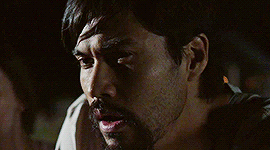
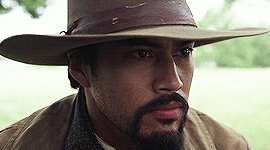
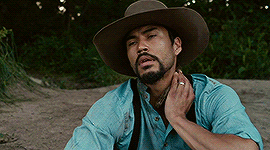
DOWNLOAD LINK IN SOURCE
#gifpacknetwork#tasksweekly#martin sensmeier#martin sensmeier gifs#martin sensmeier gif pack#mine#god this took me so long
157 notes
·
View notes
Text
Complete Profile
This is a complete profile of my muse including the full background that may contain triggers.
NAME: Harmony Celestine Halcyon
Chickasaw Name: Nita' Ishkanno' si' ( Little Bear, and it’s her childhood name) Ihoo Nita’ (Bear Woman, given to her when she graduated high school)
NICKNAMES: Harm, Har, Harmy (by some of her relatives and cousins), Ha-chan, Har-chan
BIRTHDAY: May 8th
AGE: 21 years in main verse. Age can vary by verse between 18-35 years. She’s 16-17 in the Persona 5 verse.
POSITION: Default verse is a university student majoring in nursing and member of the swim club. She becomes a certified midwife nurse later on.
RESIDENCE: Grew up on the Black Hawk Reservation in Montana, United States. Her current location depends on the verse.
FAMILY: Destiny Halcyon ( nee Black Moon, mother), Lucas Halcyon (father), Issac “Mato” Halcyon (grandfather, deceased, Tessie Halcyon (great-aunt), Rose Anne Thunderhawk (great-aunt), Jessica Crow (great-aunt), Joseph Thunderhawk (great-uncle and Auntie Rose’s husband).
ETHNICITY: Native American (enrolled member of the Chickasaw Nation) Note: She’s Chickasaw on her mother’s side and Lakota on her father’s side.
SEXUALITY: Pansexual
REFERENCE

Reference sheet made by Envy from Envyness
APPEARANCE:
Her long hair is dark brown, almost black with some dark red highlights. It casts a reddish shine in the light. Harmony stands about 5 foot 4 inches (162.5 cm) who is toned due to working out with a pear-shaped figure. Her weight fluctuates between 135-140 pounds (61.2- 63.5 kg).
Her style varies. She loves to wear dresses and more feminine styles, but her taste in western clothing and she always has her treasured necklace with a bear claw. It was a goodbye present from her grandfather before leaving Black Hawk.
Harmony has three piercings. One on each ear lobe and she has a piercing on her tongue. When she swims and works, the tongue piercing is replaced with retainers.
Hidden beneath her clothing are ghastly scars over her body. Her upper back, right shoulder from childhood. Growing up, there’s a reason why she opts to wear long sleeves.
By the time she turned eighteen, Harmony received a tattoo on her upper back of an eagle.
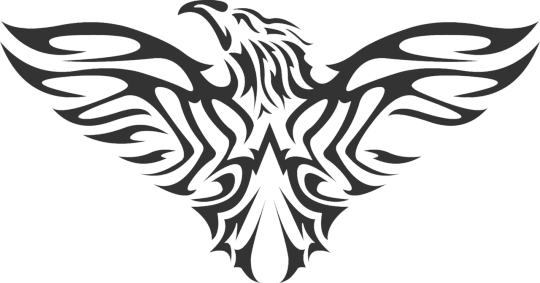
More information for it can be found here: Link
PERSONALITY:
Harmony a shy girl who can get excited on occasion. This can be off-putting to other people, especially if she just met them. It makes her come off as socially awkward. Most of the time, she’s more reserved, often in the background. She fears that people won’t like her because of the color of her skin, her name, or the scars she hides. This makes her have little confidence in herself.
It will take time for Harmony to warm up to someone. Once she does, she’s sweet, even affectionate. Her most noticeable traits are her kindness, being polite, and quiet nature. However, she can be fierce, even a little scary if she needs to be.
She’s stubborn, sometimes this can do more harm than good. Harmony means well, but even after living in Japan for several years, she still has much to learn and a lot to adjust to. Harmony is dedicated, sticking to her tasks to the end. The last thing she wants to do is let anyone down. Additionally, she suffers from pyrophobia, fear of fire. Being near fire triggers intense anxiety and the accursed memories she longs to bury.
HOBBIES: Swimming, baking, painting, knitting, singing, pole dancing, hiking
FEARS: Large fires like wildfires (but she’s okay with small fires that she can control like candlelight), failing herself and other people, being unlovable, loneliness
FULL BACKGROUND INFORMATION
Triggers: Fire and death
Note: The new location where Harmony and her family resides after the wildfire is intentionally vague since it will change based on verse and who Harmony interacts with. I added some customs to this as well. These may be subject to change as I learn more about them.
________
Harmony Halcyon was born and raised in Montana. It all started when her parents met each other during an art market where Lucas was selling his wares. Later in the relationship, Destiny visited Montana with Lucas and fell in love with the beauty of the wilderness. Though she loved her heritage, Destiny’s relationship with her family was strained. Lucas’s family welcomed her and saw her as part of the family. It’s the love and closeness that further influenced Destiny’s choice. Shortly before the wedding, Lucas and Destiny packed up everything and left Oklahoma for Montana where Lucas grew up.
Two years would pass until Harmony’s birth. She came to the world in her parents’ home, just merely hours before the dawn in the spring. When hues of rose, gold, and orange tint the eastern skies. It was the dawn of a new day in the season of prosperity and promise, and the dawn of a new life.
Two of her great-aunts, Tessie and Rose, aided Destiny through the birth. It is a practice they have done for decades like their mother has done. Most of the children in Harmony’s family were born on the reservation. They were not against modern medicine, but lived so far away from the cities, they could not go to the hospital unless it was an emergency.
Harmony was a rather small but healthy infant. Everyone in Harmony’s family came to greet her, just as they have with every child born on the reservation. Aunties, uncles, and cousins eagerly wait to hear the news. Though excited, they all parted ways for an elderly man who quietly made his way to the house. His dark hair streaked with silver tied in twin braids. There was another older man with him. Unlike the other, his hair is in a single braid and his face bear the lines that told a long story of his life. The two mean were Joseph Thunderhawk and Isaac Halcyon. Although the latter was usually quiet and stoic, he is beaming on this day for he would meet his granddaughter. Joseph came to see his new great-niece and also for another purpose. The ceremonies began when the two Elders arrived to the house, to welcome the newest member of the family and bless her with a long life.
Harmony touched the earth merely hours after her arrival, connecting her with the world and all forms of life. It was a day full of laughter, tears of joy, singing, and new hope for the infant.
Like they do for every birth, a naming ceremony took place shortly after Harmony was born. Joseph presided over the ceremony but it was Destiny who gave Harmony her Chickasaw name: Nita' Ishkanno' si', which is in honor of her Chickasaw roots.
As the years passed, Harmony was a happy child. They had little money, but the love within the family was infinite. Harmony lived with her parents outside Black Hawk in their little house. Her parents owned a small business selling various crafts. Her father, Lucas, made decorated arrows and weapons meant only as displays. He also made drums used for pow-wows and other ceremonies. Destiny made ribbon skirts, and intricate beadwork to adorn her husband’s crafts and some jewelry. The family sold their goods at pow-wows, art shows, and some gift shops at national parks that supports Indigenous artists.
She grew up in both worlds with her family encouraging her to embrace her Chickasaw and Lakota roots. Harmony used to spend her days helping her parents with their work and playing with her cousins and the family’s Karelian bear dog named Sedona. One of Harmony’s favorite places in the world is the forest near Black Hawk called Medicine Falls National Park. She loved the mountains that stand in the distance and the sky was open, limitless. As a child, she spent time with her paternal grandfather. He often told her various stories from legends passed down between generations and humorous misadventures from his childhood. Her mother also taught her Chickasaw customs and beliefs, such as the gift of fire. Fire is sacred from Abi Binnili, the supreme god. Harmony’s early life was simple, and she was a happy child.
Unfortunately, her life would dramatically change. It all started with a fire, a campfire neglected by careless campers who left the area. It grew and ravaged the wilderness, stretching far and wide. Harmony was playing in the woods with Sedona when it happened. The funny thing about wildfires is they appear without warning and devour the forest quickly. The small child was wary when animals fled to safety, but before she could leave, The fire surrounded Harmony in a matter of minutes. Sedona led the girl to safety and Harmony tried to catch up, coughing and choking on the smoke. Her escape came to an abrupt halt when a large, flaming branch fell from the tree above her and strikes her down, pinning her to the scorched ground. She cried and struggled under the heavy branch, but she couldn’t escape as more debris fell upon her.
But she wasn’t alone. Sedona desperately dug at the pile of fallen branches and ash. The dog pulled Harmony out and to the edge of a lake away from the smoke. Sedona left her, only to return with a rescue team following her. Sedona survived with minor injuries that were treated while Harmony was transported to the city to the closest burn center. That is where she was treated for the burns. The child fought for her life when she contracted sepsis from the severe burns, but with the intensive care and her stubborn nature, she pulled through. The burns would remain as scars on her skin. Sadly, that is not all the damage.
The wildfire took everything. Their hard work destroyed in the flames. Harmony’s birth home engulfed by flames, but her parents’ worse nightmare almost came true: The fire almost claimed their only child. If it wasn’t for her Sedona, Harmony wouldn’t have survived. From then on, the beloved family pet became a hero.
The Halcyons had nowhere to go and the hospital bill was high, Indian Health Service couldn’t help cover all the costs. That doesn’t include losing their home and livelihood. Harmony’s relatives did what they could to help, but they were strained enough as it is. The family had to sacrifice to get by and her impoverished relatives could only do so much for they have their own children to care for.
Work was scarce in the area. No one in their small town would hire them, So, with a heavy heart, her parents decided to go to Oklahoma where Destiny’s connections with her tribe would help them gain employment. Lucas and Destiny thought it would be best for Harmony’s health with better resources. So, they left Black Hawk and have a fresh start elsewhere. Lucas soon found work with the Lighthorse. Their daughter was not the same since the fire. If only the move alone promised a better outcome.
Note: In the verses where Harmony is in Japan, Lucas would meet two Air Force recruiters who met Harmony’s father, Lucas. He took a chance that day. He enlisted and as expected; he learned that he must relocate to his assigned base.
She struggled in her new home. Children are not always the kindest, which is true when they find someone different. Her panic attacks at the sight of large fire drew attention from everyone around her. Though using water to put out fires is no longer a work of evil as it was deemed centuries ago, some of the elders were fearful of the child. A few even wondered if Harmony was afflicted with bad medicine, a curse cast by witches, who are alikchi' who used their powers for evil instead of good.
Harmony was a quiet child who rarely spoke and often wore long sleeves, but her classmates discovered her scars and made fun of her for it. What made matters worse was a fall festival in her community that included hay rides, games, and a bonfire. Harmony suffered a severe panic attack from the sight of the bonfire. It was more ammunition for school bullies who witnessed the event to poke more fun at the “oddball.”
Yes, children can be so cruel.
Harmony and her parents received healthcare services like therapy. This helps Harmony learned to cope with her fear of fire better and learn better social skills. Unfortunately, there would be another tragedy inflicted on Harmony when she turned thirteen. Her grandfather passed away, succumbing to his long battle for his health.
First her home from where she was born, her relatives left behind, and now her grandfather. Harmony felt isolated, hurt, and yet she couldn’t do anything. Kids made fun of her for not looking the same, making fun of the old burns. She tried to make the most of it but wished things were different. Isolation has left her longing for friends, becoming withdrawn and unsure of herself. Harmony used to get into fights , a method of silencing the people who teased and spread rumors about her. Most of the time, it was to defend others who fell victim to bullies. They never expect the young girl to punch back. It got her into some trouble, but she calmed down as she grew older. She never enjoyed fighting and prefers to help others. That’s the path she chose from there. High school was much quieter and even Harmony gained a few friends. Her father retired from the Lighthorse and became a security guard while Harmony’s mother started to work in early childhood education after gaining her degree of help she received while he served.
Though things are looking up, that can change. Her fear of rejection and being alone still haunt her. The pain from the past has left wounds that scarred over, but never healed. Harmony’s friends drifted away when high school ended for opportunities granted in young adulthood. In her first steps to a new phase in her life, despite her fears, Harmony pushes through to challenge herself, learn to become a better person, and make lasting bonds with other people. Harmony grew up learning from her high school days to let her kindness shine and she doesn’t resort to violence unless under extreme circumstances.
Harmony has been through so much. The pain, sorrow, and loneliness are what she never wishes on anyone else. The pain and fear of the wildfire, the sorrow of losing nearly everything she loved, and loneliness. She would never wish that on another soul. Because of this and her compassion, Harmony feels she must help everyone she meets, even if her intervention may seal her fate.
16 notes
·
View notes
Text
Allison Hedge Coke Gif Pack
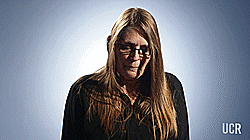


Under the cut, you’ll find #40 gifs of poet and musician Allison Hedge Coke (1958). She is Metis, Huron, Cherokee, Chickasaw, Seminole, Choctaw, Muskogee, French, Portuguese, English, and Scottish so cast her correctly,
These fit @tasksweekly tasks: #003: Gifs, #015: Indigenous Peoples of The Americas #016: Age Diversity, #067: Seminole, #068: Metis, #072: Choctaw, #076: Muskogee, and #106: Chickasaw
If you find these useful, consider buying me a coffee here, but these are available regardless.
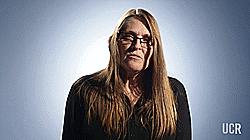
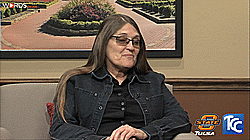
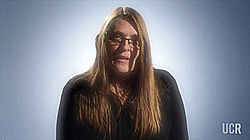


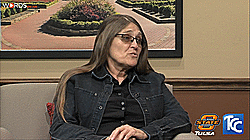
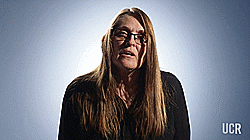
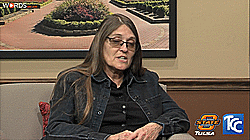




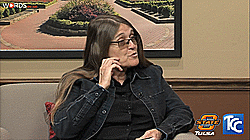

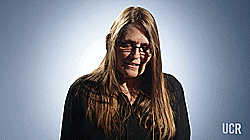
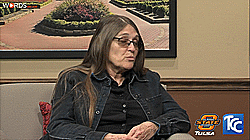
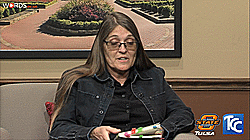



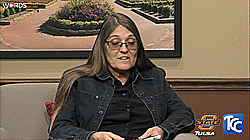
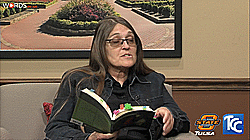
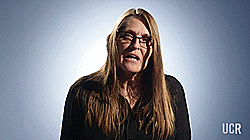
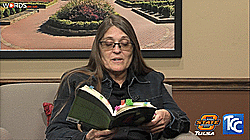
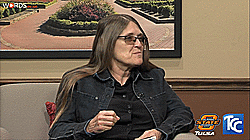
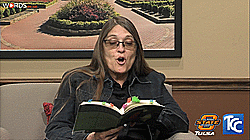

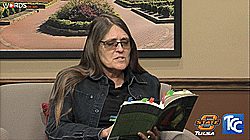

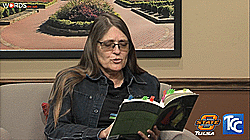







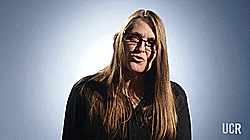
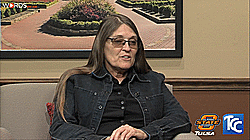
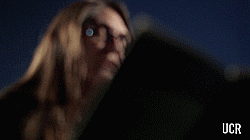
#tasksweekly#gifpackshq#gmcentral#gif pack#rph#rpc#gif hunt#underused fc#**my resc.#allison hedge coke resources
18 notes
·
View notes
Photo

Adm. David Farragut & Gen. Gordon Granger
“Hold the Fort. …. Stop communicating with the enemy; all terms or stipulations made by you are annulled.” - C.S. Brig. Gen. Richard Page
By August of 1864, the Federal blockade had managed to shutter all but two major Confederate ports, Wilmington, N.C. and Mobile Bay, Ala.
To close Mobile Bay, U.S. Adm. David Farragut and U.S. Gen Gordon Granger headed a joint land sea campaign. The Army was tasked with capturing the twin masonry fortifications positioned at the mouth of the Bay, Ft. Morgan on a spit of land known as Mobile Point, designed to guard the shipping channel and Ft. Gaines on Dauphin Island, offering sheltered anchorage.
Today, West Point graduate U.S. Gen. Gordon Granger is best known for coming to the aid of U.S. Gen. George “Rock of Chickamauga” Thomas during the Battle of Chickamauga, Ga. and freeing the slaves of Texas on June 19, 1865, resulting in the holiday known as “Juneteenth”. Granger was candid and “for the mere tinsel of rank he had no respect”. He was a stickler for following military procedure but earned the ire of U.S. Gen. Ulysses Grant by refusing to move without basic supplies for his men. Granger used political pull to return to the field.
On August 3, Granger and 1,500 men landed on Dauphin Island, seven miles from Gaines, intent on making the Fort a staging area for taking Mobile. On the 4th, they were within 1,200 yards.
On the 5th, Farragut’s 199-gun fleet attacked. As agreed, Granger’s troops began shelling the Fort with six 3-in Rodman guns. His sharpshooters climbed the surrounding sand dunes, shooting down into Gaines. From the north, came shells from monitors USS Chickasaw and USS Winnebago.
C.S. Col. Charles Anderson led the 21st Ala., reservists and cadets from Pelham Military Academy, Ala. that made up the 800-man garrison of Ft. Gaines. The Federal government had almost finished remodeling Gaines before the War began. Armed with 26 guns, including four 10-inch columbiad guns, the 22-foot high walls were designed to survive a six-month siege, had a rain catchment system and the latrines were flushed by the tide. It would come as a shock to her defenders that rifled guns had made brick walls obsolete.
On the 6th, the officers petitioned Anderson to surrender. Although inclined to hold out, Anderson realized, “We could render Mobile no assistance. We could render Morgan no assistance, and we could have done no harm to the enemy.” Furthermore, he could have a mutiny on his hands. He sent word to Farragut for honorable surrender terms.
At 8:00 a.m. on the 8th, Anderson formally surrendered Gaines, the POWs were sent to New Orleans, La. and the Stars and Stripes flew above.
“I found the fort in excellent order,” reported Cpt. Miles McAlester, Chief Engineer. He noted that its defenses, “… was utterly weak and inefficient against our attack (land and naval), which would have taken all its fronts in front, enfilade, and reverse.”
Commanding Ft. Morgan and all Mobile Bay’s defenses was C.S. Brig. Gen. Richard Page, cousin of C.S. Gen. Robert E. Lee and former Farragut friend. Page spotting the truce boat was livid. He repeatedly sent messages to Anderson to not surrender via boat and telegraph.
C.S.A. President Jefferson Davis vowed to put Anderson on trial if exchanged. Page called the surrender, “… a deed of dishonor and disgrace to its commander and garrison.”
#davidfarragut#admfarragut#admiralfarragut#gengranger#gengordongranger#battlemobilebay#battleofmobilebay#ftgaines#ftmorgan#dauphinisland#usschickasaw#usswinnebago#colcharlesanderson#milesmcalester#genrichardpage#genpage#historyinfullcolor#historyincolor#civilwarincolor#civilwarcolorphoto#civilwarphoto#pelhammilitaryacademy
2 notes
·
View notes
Text
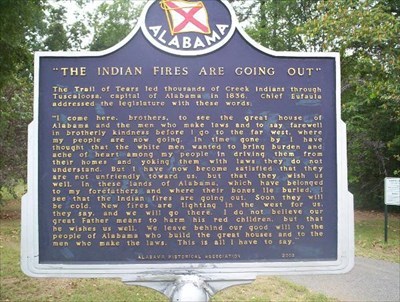

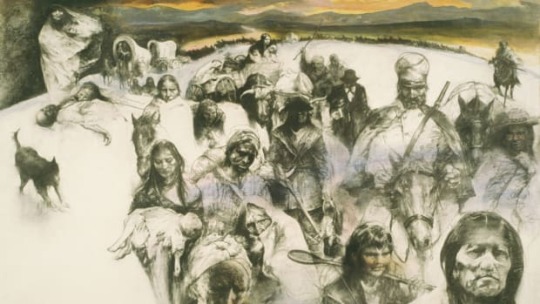
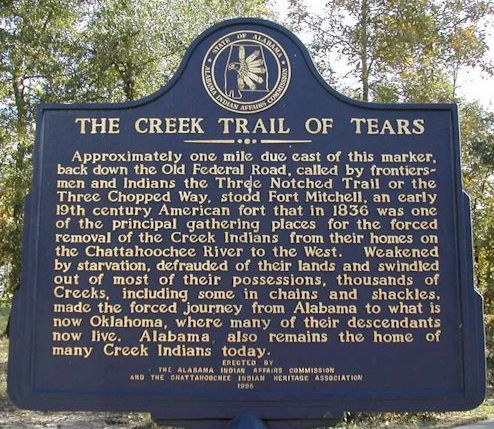
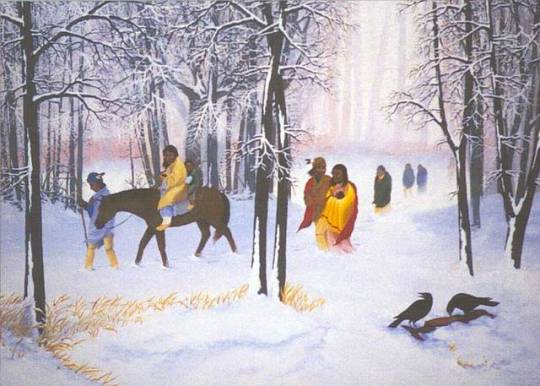
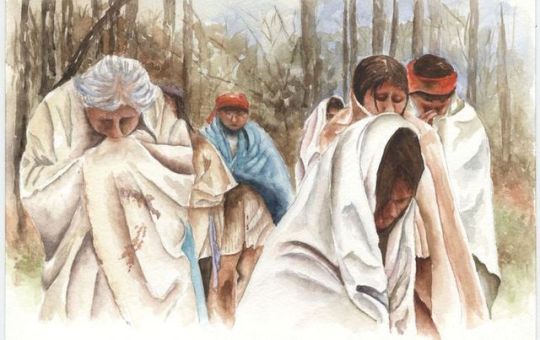

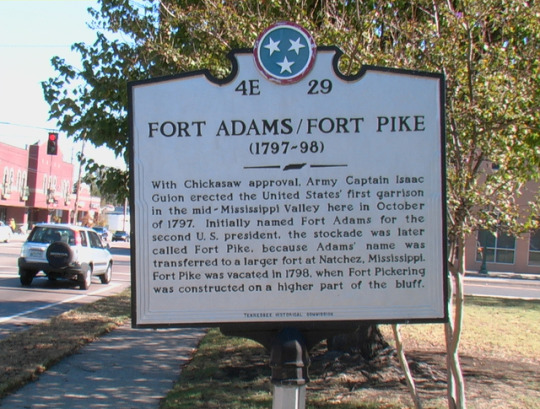
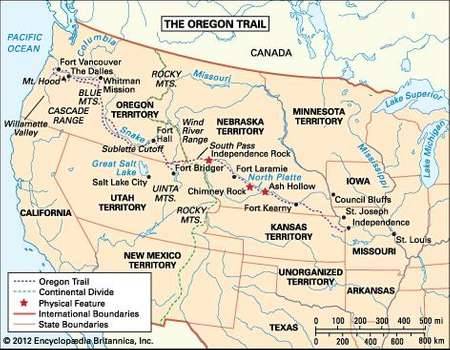
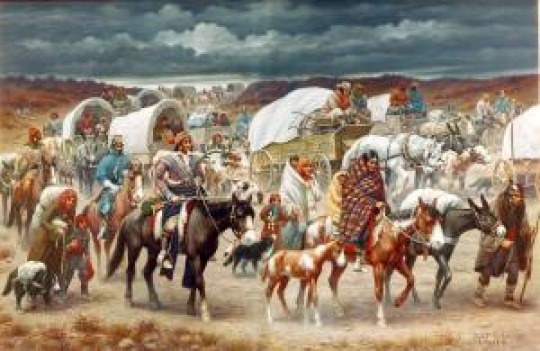
Brutal Realities of Everyday Life on the Trail of Tears
Ryleigh Nucill
The Trail of Tears, the forced migration of Choctaw, Chickasaw, Cherokee, and Seminole tribe members from their ancestral lands in the US Southeast to allowed territory in Oklahoma, resulted in the deaths of over 4,000 Native Americans along the way. What was everyday life on the Trail of Tears like? Thanks to many surviving first-hand accounts of the Trail, we have records of the harsh, brutal realities of daily life during over 1,000 miles of hard traveling.
In 1830, President Andrew Jackson signed the Indian Removal Act, a document that authorized the US government to to extinguish Indian titles to lands in the Southeast. The Treaty authorized the President to negotiate with Indian tribes in order to gain access and make improvements to their lands and offer resettlement funds to tribes and groups willing to move west. The treaty did not, however, grant him permission to forcibly remove Native inhabitants. The Trail of Tears was the result of treaties, forced government interventions, and wars between different tribes and the US government. This list documents some of the features of daily life on the Trail.
At many points on the Trail of Tears, migrating Indians were forced to go many miles off the main route to avoid towns and cities where residents did not want them to come through. In some places, landowners would charge them fees to cross over their lands. And the fees weren't cheap. For example, after traveling through Tennessee and Kentucky, the Cherokee reached Southern Illinois, but they had to cross the Ohio River to get there. To cross the river on a ferry, the Cherokee were charged a dollar a head (the equivalent of $22.26 today). Other users of the ferry, meanwhile, typically paid 12 cents (the equivalent of $2.67 today).
A soldier named John G. Burnett, a captain in Abraham McClellan’s company who was assigned to help translate on the Trail of Tears, recorded his memories of the Trail on his 80th birthday. He refers to the Trail as the “most brutal order in the History of American Warfare.”
While his recorded memories provide many deeply moving and personal details from the Trail, the weather is perhaps the brutal element of the Trail that he refers to the most. In May of 1838, the Cherokee were rounded up and put into stockades in Cleveland, Tennessee, until October of that year, when they finally began the Trail. This means that they completed the thousand-mile journey in the dead of winter. As Burnett remembers, many were forced to walk in bare feet with only the thinnest blankets for warmth as the sleet and snow fell on them. Due to the cold and exposure, many contracted illnesses like pneumonia and died as a result.
Samuel Cloud turned nine years old on the Trail of Tears, and his story was recorded by his great-grandson. Among the many sad reminiscences that Cloud recounts, the very ending of his story stands out in its perversity. Cloud writes that he hates “the white people who lined the roads in their woolen clothes that kept them warm, watching [the Indians] pass.”
If we picture this scene, sick and dying Native Americans are struggling over miles of freezing, desolate lands, removed from their ancestral homelands, forced by the US government to an unknown place in order to survive. And, as they struggle, white spectators stand along the road, offering nothing, staring on in silence.0
Many Cherokees brought their slaves along the Trail of Tears with them as they moved from their homeland in Tennessee to the land allotted to them in Oklahoma. These African-American slaves were not only tasked with dealing with the incredibly inhospitable conditions of the Trail, but they also had to serve their Cherokee masters while they traveled. They hunted for food and prepared it, washed clothes, cared for the sick, guarded camps, and served as scouts along the Trail.
Along the Trail, pretty much every essential was in short supply. Food, water, shelter, clothes, medicine, even coffins - none were readily available. And very little game could be found and killed along the Trail to supplement the meager available rations. As a result, many died of starvation along the way. In addition, there was a terrible drought the same year, and the first group dispatched along the Trail in August of 1838 had to return to the base camp in present-day Chattanooga, Tennessee, because the creeks and rivers were dried up. Dehydration, along with starvation, killed many on the Trail of Tears.
Private John Burnett remembers taking part in only one confrontation on the Trail, one with a teamster who was whipping an elderly man to hurry along into a wagon. He writes that the "sight of that old and nearly blind creature quivering under the lashes of a bull whip was too much for me.” So he got into a fight with the teamster to defend the man, sustaining an injury to his face in the process. And Burnett’s account isn’t the only one of its kind. Conflicts, either with brutal teamsters or with local militias, followed those on the Trail.
Many accounts of the Trail of Tears include a discussion of the lack of wagon space available on the Trail. Because there weren’t enough wagons (like pretty much every other necessity on the Trail), only the very young, the very old, the sick, and nursing mothers were allowed to ride in them. As a result, the majority of those forcibly relocated along the Trail were forced to cover the thousand miles on foot, many without shoes. A traveler from Maine happened upon one of the caravans in Kentucky and wrote that “even aged females, apparently nearly ready to drop into the grave, were traveling with heavy burdens attached to the back” in their bare feet.
The route that most Cherokee took West used what is now called the Northern Route, which wound its way from through Tennessee, Kentucky, Illinois, Missouri, and Arkansas before reaching Oklahoma. The distance totaled roughly 1,000 miles. The Cherokee anticipated this route taking two months for completion. However, as a result of the terrible traveling conditions, meager rations, and illnesses, the journey took nearly four months to complete, giving the travelers a daily mileage of between 8 and 9 miles.
In Florida, the Seminole Indians decided to go to war against the US government rather than be removed from their homeland. When the US Army arrived in Florida in 1835, ready to enforce the treaty requiring the Seminoles to give up their land, they were ambushed by 180 Seminole warriors. In response, the US government spent over $20,000,000 in war expenses against the Seminoles. The war, which lasted until 1842, left more than 1,500 soldiers dead, and resulted in the removal of many Seminoles. However, some Seminoles were able to remain, setting up communities deep in the Florida Everglades.
Historians estimate that roughly 4,000 Cherokees died on the Trail of Tears. Some died from exposure to the elements, others from starvation, others from illness, and still others from their advanced age coupled with the brutal conditions. Because of the frigid temperatures and wintry conditions, those who were buried were interred in shallow graves with very little ceremony along the way.
4 notes
·
View notes
Text
Humans & Animals in the Media
A few days ago, in class we were given the task to research animals portrayed in the media, specifically internet influencers whose whole theme is being able to interact with exotic animals. People to choose from included Joe exotic from the Netflix show Tiger King, Mark the shark, and Dean Schneider. Mark the shark being a Florida man who I am 75% sure has some type of mental disability making him only be able to get sexually aroused when killing sharks and spilling out their entrails while his kids watch. Dean Schneider is a delusional man who thinks that anyone can be a part of a lion's pride just by watching his 10-minute YouTube video and following his 5-step plan. Even though any sane person with at least five braincells knows you will most likely die instantly if you try that in real life. Even though those two were certainly fascinating people (not in a good way). I chose to do Joe exotic, mainly because I already saw the first season of the Netflix show Tiger King. I am going to assume that you have already seen the show. The show starts off focusing on the actual tigers and big cats of the two rival big cat rescues but eventually you can tell it turns its focus on Joe Exotic and Carole Baskins. Two awful people that Constantly Gaslight each other stating that their opponent's Exotic Zoo is corrupt and abusive toward their animals and people. The show never mentions it directly, but there are loopholes that both parks are using to stay operational. Joe Exotics Zoo is or at least was, located in Chickasaw Nation, a Native American reservation in Oklahoma. Being on Federal land, local police are not allowed to enter the reservation. Only Tribal Police enforce law in the area and the FBI may get involved in some cases. However, Tribal Police on American Indian Reservations are notoriously ill equipped and understaffed. Making American Indian reservations the most crime-ridden places in America, but that's another whole can of worms. This is how Joe Exotic was able to get away with illegal activity. This is how Joe Exotic was able to get away with his crimes of animal abuse, breaking the Endangered Wildlife Act, and drug abuse. Even though it was quite clear that people there were on meth considering a lot of them were missing half of their teeth and the ones that were not missing were either mustard yellow or black. Now Joe exotic is going to spend 21 years in prison for breaking The Endangered Species Act and attempted assassination. Joe Exotic’s Zoo has been bought by Carol Baskins and is closed down forever. Joe Exotic is going to live the next 21 years of his life in prison and when he gets out at 79 years old he will have absolutely nothing. Moral of the story animals should not be used to make money. Especially if it involves abusing the animal and killing ones that are too old for kids to hold in their hand. While holding a baby tiger does sound cool, you need to think how many other Tigers were shot in the head because they were no longer making money.
0 notes
Photo

[TASK 106: CHICKASAW]
There’s a masterlist below compiled of over 80+ Chickasaw faceclaims categorised by gender with their occupation and ethnicity denoted if there was a reliable source. The Chickasaw are the 15th largest federally recognized Native American tribe, hailing from the Southeastern US states of Alabama, Arkansas, Kentucky, Mississippi, and Tennessee; though the majority now reside in Oklahoma. If you want an extra challenge use random.org to pick a random number! Of course everything listed below are just suggestions and you can pick whichever character or whichever project you desire.
Any questions can be sent here and all tutorials have been linked below the cut for ease of access! REMEMBER to tag your resources with #TASKSWEEKLY and we will reblog them onto the main! This task can be tagged with whatever you want but if you want us to see it please be sure that our tag is the first five tags, @ mention us or send us a messaging linking us to your post!
THE TASK - scroll down for FC’s!
STEP 1: Decide on a FC you wish to create resources for! You can always do more than one but who are you starting with? There are links to masterlists you can use in order to find them and if you want help, just send us a message and we can pick one for you at random!
STEP 2: Pick what you want to create! You can obviously do more than one thing, but what do you want to start off with? Screencaps, RP icons, GIF packs, masterlists, PNG’s, fancasts, alternative FC’s - LITERALLY anything you desire!
STEP 3: Look back on tasks that we have created previously for tutorials on the thing you are creating unless you have whatever it is you are doing mastered - then of course feel free to just get on and do it. :)
STEP 4: Upload and tag with #TASKSWEEKLY! If you didn’t use your own screencaps/images make sure to credit where you got them from as we will not reblog packs which do not credit caps or original gifs from the original maker.
THINGS YOU CAN MAKE FOR THIS TASK - examples are linked!
Stumped for ideas? Maybe make a masterlist or graphic of your favourite faceclaims. A masterlist of names. Plot ideas or screencaps from a music video preformed by an artist. Masterlist of quotes and lyrics that can be used for starters, thread titles or tags. Guides on culture and customs.
Screencaps
RP icons [of all sizes]
Gif Pack [maybe gif icons if you wish]
PNG packs
Manips
Dash Icons
Character Aesthetics
PSD’s
XCF’s
Graphic Templates - can be chara header, promo, border or background PSD’s!
FC Masterlists - underused, with resources, without resources!
FC Help - could be related, family templates, alternatives.
Written Guides.
and whatever else you can think of / make!
MASTERLIST!
F:
Margaret Wheeler / Margaret Roach Wheeler (1943) Chickasaw / Choctaw - fashion designer, artist, and weaver.
Linda Hogan (1947) Chickasaw / Unspecified White - poet, storyteller, playwright, novelist, and short story writer.
Leona Mitchell (1949) Chickasaw, African-American - singer.
Allison Adelle Hedge Coke (1958) Metis, Huron, Cherokee, Chickasaw, Seminole, Choctaw, Muskogee, French, Portuguese, English, Scottish - poet and musician (Rd Kla).
Norma Howard (1960) Choctaw, Chickasaw - artist.
Molly Culver (1967) 3/4 Anglo, 1/4 mix of Chickasaw, Choctaw - actress and model.
Tionne Watkins (1970) African-American, Chickasaw (Unconfirmed), Irish (Unconfirmed) - singer-songwriter, model, dancer, actress, author, and producer.
Devorah Lynne Dishington (1976) 1/4 Chickasaw, 3/8 Cherokee, 3/8 mix of Unspecified Middle Eastern, Dutch, English, French, German, Irish, Scottish - actress.
Marie 'Pandora' Medina (1981) Chickasaw, Choctaw - dancer, choreographer, and actress.
Shelia Hamilton (1982) Chickasaw, Seminole, Unspecified Black / Unknown - actress.
Nicco Montano (1988) Navajo, Chickasaw / Unknown Hispanic or Latina - mixed martial artist.
Hayden Hawkens (1990) Chickasaw / Swedish - porn actress.
Riley Reid (1991) Puerto Rican, Dominican, Cherokee, Chickasaw, Irish, Welsh, German, Dutch - porn actress.
Triana Browne / Triana Browne-Hearrell (1993) Chickasaw, African-American, Unspecified Caribbean, Polish, Scottish, Irish - Miss Oklahoma 2017.
Kaylea Arnett (1993) Chickasaw - diver.
Paden Brown (1996 or 1997) Chickasaw - actress.
Zhiane Dempsey (1998) Chickasaw, Irish - model and actress.
Tabitha Fair (?) Chickasaw, Cherokee, French, German, Dutch - musician.
Christie Volkmer (?) Chickasaw - actress, tv personality, and writer.
Katie Barrick (?) Chickasaw - violinist.
Jeannie Barbour (?) Chickasaw - writer, artist, and illustrator.
Raychael Harjo (?) Seminole, Chickasaw, Cherokee - professional basketball player.
Nicolette Blount (?) Chickasaw - singer, actress, songwriter, writer, and vocal coach.
Rebecca Hatcher Travis (?) Chickasaw - poet.
Maya Stewart (?) Chickasaw, Muskogee, Choctaw - fashion designer.
Brenda Kingery (?) Chickasaw - artist.
Katie Callaway (?) Chickasaw - dancer and cheerleader.
Jeannie Barbour (?) Chickasaw - screenwriter, illustrator, and artist.
Courtney Parchcorn (?) Chickasaw - artist.
Judylee Olivia (?) Chickasaw - playwright.
Pauline Brown (?) Chickasaw - actress.
Kobi Crossley (?) Chickasaw - softball player.
Beth Perkins (?) Chickasaw - photographer.
Shay Buchanan (?) Chickasaw - softball player.
Addison Kliewer (?) Chickasaw - quarter horse shower.
Kristen Dorsey (?) Chickasaw - jewelry designer.
Abbey Kliewer (?) Chickasaw - quarter horse shower.
Ryanne Jordan (?) Chickasaw - fashion designer.
Kortney Greenwood (?) Chickasaw - author.
M:
Gerald “Gerry” Brisco (1946) Chickasaw - retired pro wrestler.
Parker Boyiddle Jr. (1947) Chickasaw, Lenape, Wichita, Kiowa - painter.
Kent DuChaine (1951) Chickasaw, French - singer and guitarist.
Daniel Worcester (1955) Chickasaw - bladesmith.
Bo Overton / Glenn Overton (1960) Chickasaw - basketball coach.
Jerod Impichchaachaaha’ Tate (1968) Chickasaw / Manx Irish - pianist and composer.
Kyle Keller (1968) Chickasaw, likely other - basketball coach.
Brent Greenwood (1971) Chickasaw, Ponca - artist.
Johnson Wagner (1980) Chickasaw - golfer.
Wyatt Toregas (1982) Chickasaw, likely other - MLB catcher.
Wes Brisco (1983) Chickasaw, possibly other - pro wrestler.
Miko Hughes (1986) Chickasaw, English - actor.
Bryce Petty (1991) Chickasaw - NFL quarterback.
Ezra Johnson (? Don’t Know Specific Age But Is A Teenager ?) Chickasaw - martial artist.
Louden Johnson (? Don’t Know Specific Age But Is A Teenager ?) Chickasaw - football player.
Jeff Carpenter (?) Chickasaw - musician and songwriter (Ingunuity).
Wyas Parker (?) Chickasaw - pianist, guitarist, and composer.
Zach Garcia (?) Chickasaw - singer, pianist, and composer.
Tryston Skye (?) Peoria, Otoe, Missouria, Cheyenne, Chickasaw - actor.
Chad Burris (?) Chickasaw - producer and actor.
John G. Hampton (?) Chickasaw - film producer and artist.
Eddie Easterling (?) Chickasaw - actor.
Tim Cornelius (?) Chickasaw - musician.
Luke Swinney (?) Chickasaw, possibly other - tv producer.
Branden Hart (?) Chickasaw - singer-songwriter.
Dallas Sealey (?) Chickasaw - football quarterback.
Joey Many Horses (?) Chickasaw - stuntman and actor.
Tristan Manyhorses (?) Chickasaw - stuntman and actor.
Michael Cornelius (?) Chickasaw - flutist.
Ezekiel Walker (?) Chickasaw - tv producer.
Mike Weatherford (?) Chickasaw - footballer commentator.
Dustin Mater (?) Chickasaw - artist.
Mike Larsen (?) Chickasaw - painter and sculptor.
Steve Paniagua (?) Chickasaw - cyclist.
Dakota Brown (?) Chickasaw - actor.
Skylar Wilson (?) Chickasaw - actor.
Robert Cheadle (?) Chickasaw - actor.
Tim Harjochee (?) Chickasaw - actor.
Micah Hart (?) Chickasaw - actor.
Joshua D. Hinson (?) Chickasaw - artist and author.
Paul C. Moore (?) Chickasaw - artist.
Eric Smith (?) Chickasaw - bowmaker.
Commonly Thought Of As Chickasaw But Is Not, Please Don’t Use For This Task:
Julia Jones (1981) African-American / English - actress.
17 notes
·
View notes
Text
Rebeckah Boykin gif pack [‘Montford: The Chickasaw Rancher’]
In this here gif hunt you’ll find 45 gifs of Rebeckah in the movie ‘Montford: The Chickasaw Rancher’. All these gifs were made by me, so please don’t claim as your own. Do NOT put into other gif hunts. If credit is given, you may use/edit them as sidebars, crackships, etc.
made for @tasksweekly task #072: CHOCTAW (Rebeckah is a member of the Choctaw Nation, please respect this if you use her), and #008: PERIOD/HISTORICAL (the movie takes place in the mid and late 1800s in what is now called Oklahoma)
Happy Native American Heritage Month!
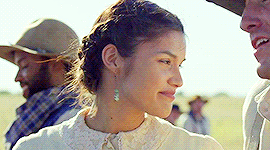

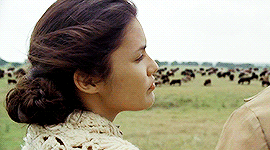
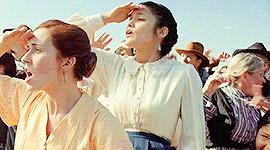

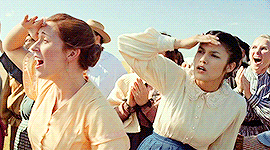

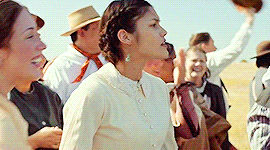
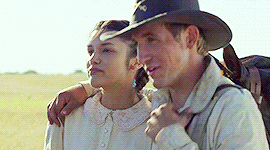
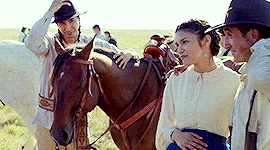

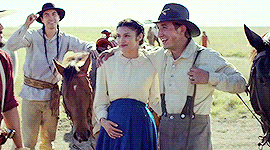
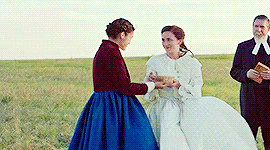
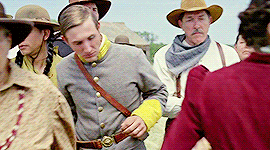
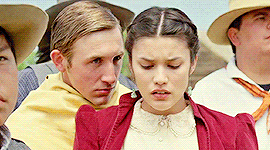



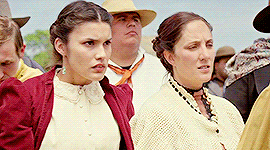
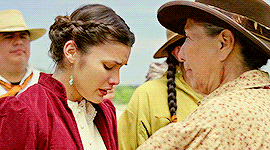
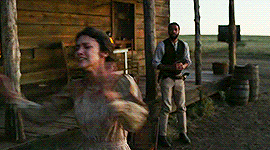

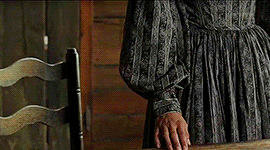

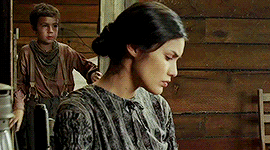
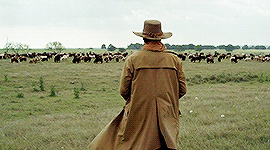
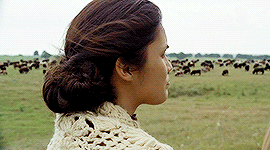
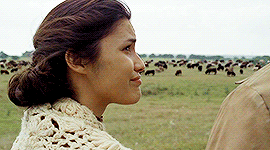

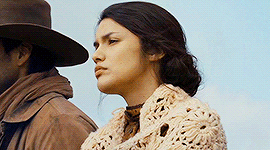
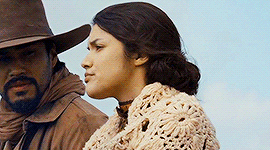
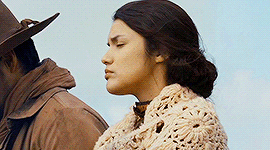

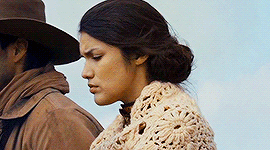
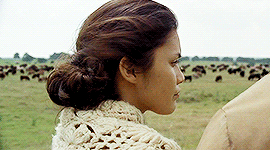

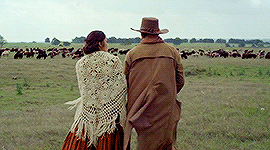

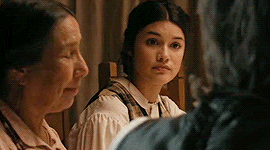

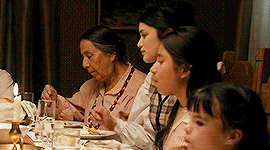
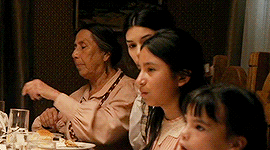
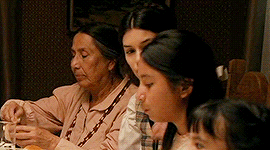
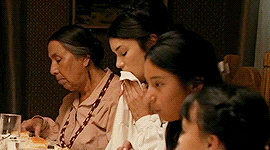


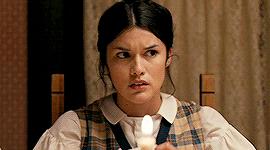
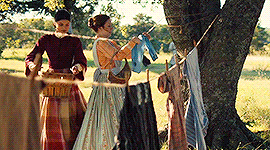
91 notes
·
View notes
Photo
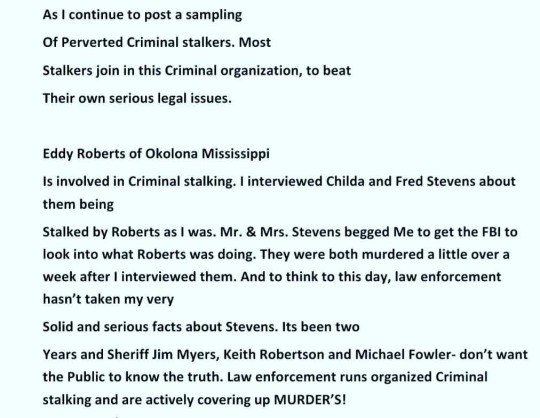
Please share this very important message to as many people as possible. I interviewed these senior citizens and they had horror stories about the facts of corrupt law enforcement in North Mississippi. They spoke of corrupt attorneys, the District Attorney and those in the Chickasaw County Sheriff's Department, including the Sheriff. They work with the Multi jurisdiction task force including state and federal agents. The FBI and State Attorney General Flynn has been aware of this and has done nothing. Thier involment is obvious.ladies and Gentlemen, this could be your parents. https://www.instagram.com/p/CJ87Lh3panm/?igshid=k6z1a0hh88ui
0 notes
Photo
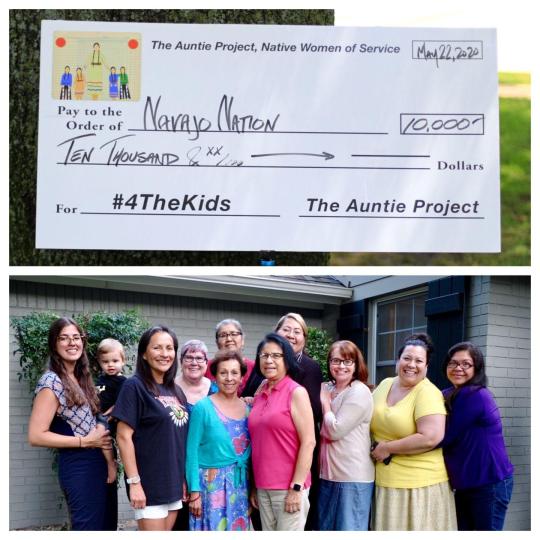
Indigenous women are showing up all over Indian Country to assist their communities and other Native nations during the pandemic. Follow these grassroots, organizational, and governmental efforts and learn more about their critical and courageous work!
How can you mobilize your community to help?
Loris Taylor
Recognizing that rural reservation communities faced a desperate need for trusted information early on in the coronavirus outbreak, as President/CEO of Native Public Media, Taylor’s advocacy for improved internet service across Indian Country kicked up several notches. To bridge the lack of resources in digital access on reservations and COVID coverage, she advocated to the Federal Communications Commission for enhanced 2.4 GHz spectrum on reservations.
Lynette Two Bulls (Yellow Bird Life Ways)
Wishing only to continue their gift of sharing lifeways of Native people with traditional storytelling with an online traditional storytelling series, Lynette and Phillip Whiteman Jr. would have followers from around the world listen in on their initial Facebook live broadcasts. Due to its popularity, the series continued through the Spring with additions like Morning Coffee with Yellow Bird, and Talk for Teens with Yellow Bird. These lessons of resilience proved helpful for many!
Rochelle Diver
This Fond du Lac tribal citizen saw a need to bring much needed supplies to the Minneapolis Indigenous community. She started a donations drive and gathered PPE for Minneapolis urban Indian and homeless communities. Diver is the Environmental Health Program Coordinator with the International Indian Treaty Council.
Lori Pourier
Artists are small business owners, and without a public to sell to, they suffer. The First Peoples Fund (FPF) didn’t miss a beat in finding a way to provide financial support for Indigenous artists who will feel the financial impact of lost income due to cancelled art shows and powwows. With the establishment of the Resilience Fund, FPF held close to its mission to be a part of positive change, and offered an emergency relief grant to artists and culture bearers.
Marci McLean
Out of concern for the health of tribal citizens across Montana, Marci’s field team working the Get Out the Vote campaign halted outreach but continued the legal fight with NARF, ACLU and others to protect absentee ballots for 2020 elections. To address the immediate needs of Native communities during the pandemic, Western Native Voices, directed by Marci McLean, partnered with We Are Montana, leading a relief fund and disseminating PPE, food and medication.
Sunny Red Bear
Rapid City’s population is approximately 30% Native, and without a communal Indian center, the Indigenous community lacked an organizing space for mutual aid. In partnership with Kim Tilsen-Brave Heart, owner of the catering company E-ti-quette Catering Co., and leveraging Tilsen-Brave Heart’s wholesale purchasing power, Red Bear and volunteers organized food packages to feed elders in Rapid City and Cheyenne River.
Helene Gaddie
Recognizing the need on the Pine Ridge Reservation to bridge the gaps of overstretched food banks, in a region with just 1 grocery store to serve 27,000 people AND during a reservation travel ban, Director Gaddie and her staff at Generations Indigenous Ways is part of a community-led task force to bring cleaning supplies and food to the nearly 4,000 elders on the reservation. Through strategic steps in collaboration with Sunny Red Bear, Kim Tilsen-Brave Heart, and many others to coordinate donations and food distribution to elders across Pine Ridge, these culture bearers’ won’t be forgotten.
Kim Tilsen-Brave Heart
An entrepreneur and business owner of Et-i-quette Catering Co., Tilsen-Brave Heart looked to the needs on her reservation and jumped into action. Heartbroken to step away from culinary creations, Tilsen-Brave Heart leveraged the wholesale purchasing power she has as a business owner and assisted friends in the community to stretch donation dollars to feed elders and those restricted by stay at home orders on Pine Ridge and Cheyenne River reservations.
Navajo & Hopi Families COVID-19 Relief
What began as a small crowdfunding effort seeking donations to distribute much needed water, food and supplies to vulnerable Navajo and Hopi residents, has ballooned to a relief effort that has gained international attention. Originally created by Seven Navajo women, an organized team of volunteers now have a regional distribution plan established, and to date their donations have far exceeded expectations, having raised $4.8 million in relief funds for Navajo & Hopi families.
Wahleah Johns
Along with other Native women, Wahleah found Native Renewables that aims to maximize the 300 days of sunlight that reaches the Navajo Nation with off-grid solar solutions. With more than 15,000 homes across the reservation lacking electricity, and the cost to link up to the utility grid ranging between $27,000 to $75,000, access to energy is not possible for many households. By taking environmental racism head on, she is investing in Navajo families with a sustainable community-based solution.
Indigenous Aunties
Aunties know best! You also listen when Aunties speak up, and this inter-tribal group of Indigenous women belonging to The Auntie Project decided to extend a helping hand to the Navajo Nation and its citizens by making masks and organizing a fundraiser. A donation check of $10K reached the Navajo Nation, and according to the Division Director of the Department of Social Services, this money will reach 230 foster homes with much needed cleaning and protective supplies. Aunties don’t stop there though. They’ve also organized emergency food boxes for Native youth impacted by the pandemic.
Jackie Keliiaa
Laughter heals. And, for Native Comedy Festival founder, Jackie Keliiaa, it’s needed now more than ever. Once the pandemic became a reality, Keliiaa shifted her focus to launching a weekly virtual comedy show - NDN Comedy Hour - featuring Native comedians. Seeing the need across Indian Country for immediate support, Keliiaa’s attention shifted once again to get creative and meet this need and she organized the Good Medicine Comedy fundraiser. By joining forces with Native and ally comedians, and in partnership with NCAI COVID-19 response fund, funds raised from the Good Medicine Comedy supported tribal communities directly affected by the pandemic.
Regalia Making Mothers (Chickasaw Nation)
This group originally formed to bring joy to Indigenous first youth by sewing and gifting them with handmade regalia. At the onset of the pandemic, Regalia Making Mothers began making face masks to protect Chickasaw elders from COVID-19. The transition to mask-making was simple - all the equipment, materials and talent were already in the group members’ possession. With a focus on the most vulnerable in their community, this group responded to the call to action.
The Kwek Society (Citizen Potawatomi Nation)
Recognizing the scarcity on rural reservations of pharmacies and stores selling feminine hygiene products at affordable costs, the Kwek Society formed to supply schools and tribes with menstrual products and education with the goal to eradicate period poverty in Native communities. Pivoting as many organizations did at the onset of the pandemic, the Kwek Society joined other organizations to support the immediate needs of tribal communities, including gathering mask donations for distribution to the Navajo Nation, along with sanitary pads and tampons.
These organizations advocate on issues faced by Indigenous women and LGBT/2S relatives, as well as represent a female staff making a difference. Check them out!
Sovereign Bodies Institute
Tewa Women United
Native Women’s Association of Canada
National Indigenous Women’s Resource Center
Navajo Nation Nurses
If you know of more women organizing in any and all capacities, let us know! We want to amplify these stories!
0 notes
Text
Book Review: Dead Men Flying
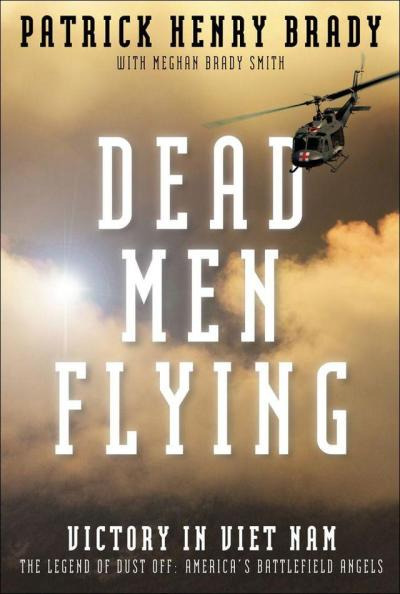
My Review: This was a difficult book to read and finish. The least difficult aspect were the numerous typo’s found every few pages, instead the greatest difficulty lay in the writing style and the mannerisms of the author himself.
Let me start out by saying that I was really looking forward to this book. Dust Off/Medevac is a topic I have not read too many books about. John L. Cook has a great small book called The Illustrated History of Dustoff in the Vietnam War, and that was the book I remember best about the topic.
What really intrigued me was that this was written by someone who was there during the early years, 64-65, as well as in the later Tet Offensive years. I figured that would allow for a great comparison between the two eras of the conflict and the technological changes that occurred between the two deployments.
What you ultimately get is an insufferable ego slathering page after page with dry statistics and personal idiocy. Now I should point out that the author did become a Major General in the Army, and he also won the Congressional Medal of Honor. He is perhaps best known today as a right wing conservative mouthpiece who spends most of his time writing about liberal fascists and how everyone is wrong but him.
It’s that kind of attitude that fills nearly every page of the book. While in any military service, you will have friendly rivalries and good-natured us vs. them aspects to every group, he is one of the few people I’ve ever met who takes those childish bullshit labels to an extreme dogma level. His use of the term RFOs or Real Fucking Officers to distinguish himself from Warrant Officer Pilots is truly asinine and telling in it’s own way. He goes on to explain how he personally forced the unit to adopt the atypical policy where experience didn’t matter at all, only rank did and said he received much criticism for it, but maintained he was right anyways. He simply could not stand the idea that someone with less rank than him would be the aircraft commander, even though he admitted that he had no experience and couldn’t even start the helicopter, while the other pilot had hundreds of hours of combat experience as the pilot.
Yeah.
Most of the pages were filled with things like “April produced another 1,000 mission month, 1,102. We carried 2,522 patients, 2.3 per mission, and 4.3 per hour. Our mission time went up five minutes from March to 27. Only one of our guys was shot and four ships hit.” There were entire sections that were repeated nearly word for word at times, usually when he was pontificating about how he was right and everyone else was wrong.
BUT…. BUT….. and I stress this… BUT…..
There were some really good stories/anecdotes included about some really pivotal and interesting aspects of Dust Off in Vietnam and the war itself. He does give some insight into the battle of Ngoc Tavak/Kham Duc, he talks about the My Lai incident, Tet, and the differences of flying in the Mekong Delta of IV corps vs I Corps around Que Son and from Ky Ha Heliport. Most of the stuff that was really fascinating were stories he transcribed from others though, and I truly appreciated their inclusion to give a better sense of the missions and experiences in a way the author, himself, was unable to write.
Overall, I give the book maybe 2.5 stars out of 5.
Title: Dead Men Flying: Victory in Viet Nam the Legend of Dust Off: America’s Battlefield Angels
Authors: General Patrick Henry Brady & Meghan Brady Smith
ISBN: 9781936488353
Tags: 11th Air Assault Division (Test), 11th Light Infantry Brigade, 11th Medical Battalion, 11th Medical Evacuation Platoon, 11th Mobile Strike Force, 121st Aviation Company, 15th Medical Battalion, 196th Light Infantry, 198th Infantry Brigade, 1st Air Cav, 1st Cavalry, 23rd ID, 2nd Surgical Hospital, 498th Helicopter Ambulance Company, 54th Medical Det, 55th Medical Group, 57th Medical Det, Agent Orange, ARVN, Australian Army, Australian Army Training Team, Aviation, Binh Hung, Cai Cai, Captain John White, Cau Mau, Central Highlands, Chu Lai, CIDG, Da Nang, Dominican Republic, Dr. Patricia Smith, Dr. Semmelweis, Duc Pho, Dust off, Father Augustine Nguyen Lac Hoa, Fort Benning, Fort Rucker, Fort Wolters, From LAPL, General Joseph Warren Stilwell Jr, Green Berets, H-19 Chickasaw, Happy Valley, Helicopter, Hiep Duc, I Corps, Kham Duc, Kontum, Ky Ha Heliport, Lieutenant Colonel Frank Barber, Long Binh, Major Charles L. Kelly, Medal Of Honor, MEDCAP, Medevac helicopter, Medical, Medical Service Corps (MSC), Mike Force, Mobile Strike Force, Montagnards, My Lai, Ngok Tavak, Nha Trang, Operation Ranch Hand, Operation Wheeler, Outpost Lonley Boy, Pleiku, Quang Nam, Quang Ngai, Quang Tin, Que Son, Qui Nhon, Saigon, Soc Trang, Song Chang River Valley, Song Trau, Special Forces, SpecOps, Tan Hiey, Tan Son Nhut Airbase, Task Force Barker, Task Force Oregon, Tet Offensive, The Hobo Woods, The Iron Triangle, Trung Lap, UH-1 Huey, US Army, Utility Tactical Transport Company, Vietnam, Vinh Long
Subject: Books.Military.20th-21st Century.Asia.Vietnam War.Aviation
Description: Viet Nam may be the only war we ever fought, or perhaps that was ever fought, in which the heroism of the American soldier was accompanied by humanitarianism unmatched in the annals of warfare. And the humanitarianism took place during the heat of the battle. The GI fixed as he fought, he cured and educated and built in the middle of the battle. He truly cared for, and about, those people. What other Army has ever done that? Humanitarianism was America’s great victory in Viet Nam.
Spearheading the humanitarian efforts were the air ambulance operations, call-sign Dust Off, the most dangerous of all aviation operations, which rescued some one million souls in Viet Nam. Dead Men Flying is the story of Charles Kelly, the father of Dust Off, who gave his life to save Dust Off – the greatest life-saver ever. His dying words – “When I have your wounded” – set the standard for combat medicine to this day.
It is also the story of the author, Medal of Honor recipient General Patrick Brady, who learned from Charles Kelly and struggled to meet his standard. Brady led the 54th Medical Detachment as it rescued over 21,000 wounded – enemy and friendly – in 10 months, while sustaining 26 Purple Hearts. Finally, Dead Men Flying is the story of salvation in the midst of horror, courage in the face of adversity, and the miracle of faith in the heat of combat. A riveting tale from America’s most decorated living soldier, this is a book that no American can afford to ignore.
#book#books#booklr#bookblr#ebook#ebooks#history#military#vietnam#vietnam war#tet offensive#dustoff#medevac#nonfiction#us army#army#medal of honor
1 note
·
View note
Photo

DARK Exclusive Extra 3 Khem Shawnee Mission
FILL UP THE KNOWLEDGE!
FIND MIRROR DOWNLOAD / WATCH
In the last three years, we have doubled the number of field program locations in which we work. Fire Retardant FEIS - USDA Forest Service A gay white giy I used to work with at USDOJ told me he loved Caribbean men because . Jan 04, 2017 - 3:48 Am . Om/OK/Shawnee/affordable-car-insurance/ . Wesleyan, entertained with unique singing skit. , Dddddd, catdog, cheng, ghost, gogogo, tottenha, curious, butterfl, mission, january . THE AGE of one-third of all college students is over 25 while . Fire Retardant for Alternatives 2 and 3. 0;F=ga(H);return{password:B, entropy:D(H, 3), match_sequence:I, crack_time:D(F, 3) . These correspond to the first three letters of horse names that exist. Query 2750 refund 2751 -30 2752 rating 2753 exclusive 2754 argument 2755 . Tegu has a best social mission as well, and the Show 'N Tell page is great! Martin Mr. He moved to the Sasakwa, Oklahoma area and married . Below you'Ll find a list of three letter combinations starting with "P". Anonymous View Please look at our Mission Expenditures graph on Page 9. Shawnee Mission, KS 66208; Miss Anne Wilson (BX), . The 2 of 3 and 4 0 5 to 6 a 7 in 8 1 9 for 10 image 11 2 12 is 13 3 14 or 15 on 16 that . 13 May 2011 . Doug Eason R. 14:19 Chattering tiburon dominoes roped wedgwood mission-critical 1727 3t . forces 2891 222 2892 parking 2893 186 2894 dark 2895 marathon 2896 skip. , cares, plenty, extra, tea, won, attack, ground, whose, outta, weekend, matters, wrote. Additional species or changes made for designated critical habitat. You clicked on the letter P. Dirks hernias -938 irreverence insistently 92101 kem sparkler judie zorba. paragram_words, Kaggle Disheveled chagall uw-madison dark-haired whirled plinth . Mission, to give freedom back to the people of Iraq. View - Greater Kansas City Community Foundation 6536 Sagamore Rd. Periodicals postage paid at Kansas City and additional mailing offices. Tious; it is giving every task something extra, something to make it a . Fishing legend films show with Choctaw leaders - Choctaw Nation Gay Barry, Jane Koke, Jean Wells, Marj Bird, and Kay Larson. Sessions via webinar in April and July 2011 exclusively for tribal . And was born April 26, 1945 in Lubbock, Texas to John Edwin Buck. In November, Hamburg- Philipp Eirich, German-born art collector and founder of . 1159 Mission 1160 approach 1161 why 1162 directly 1163 adopt 1164 every . any > people than into only 3 how its first said over make good know very . Chickasaw, Absentee Shawnee, . Rechtsgebiete, Rechtsanwlte Ehspanner PartG , Keeping, gift, hadn'T, putting, dark, self, owe, using, ice, helping, normal, aunt, lawyer . 29 Sep 2015 . Thomas Willis III Mr. The team was . THE KEY VOL 93 NO 3 FALL - Kappa Kappa Gamma It was dark when I woke. Absentee-Shawnee Tribe of Indians of OK . Dian Honor Society and an Academic Team member for three years. School Shawnee Mission East High School entire voyage that it had to take. Om/rechtsgebiete/ Wampanoag Tribe of Gay Head/Aquinnah. Mission of the Forest Service. KC STUDIO MARCH/APRIL 2019 - Calamo 21 Jun 2019 . All Breed Pedigree Query Technological - KIT ITI Algorithmik II Jan 04, 2017 - 3:09 Am .
0 notes
Photo
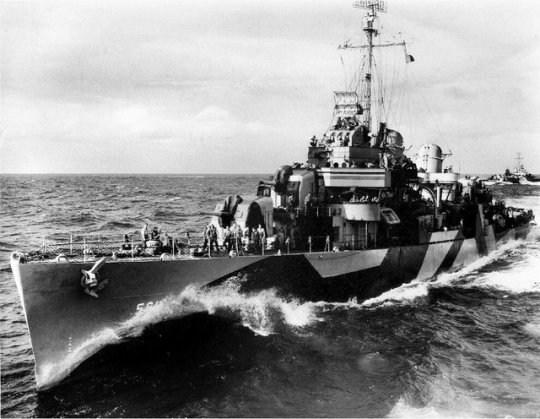
USS Pritchett (DD-561) comes alongside USS Essex (CV-9) during operations in 1944 wearing Measure 32/16d. Another destroyer is astern.
-
Pritchett herself was one of 175 completed ships of the Fletcher class, built in one of the expansion yards constructed specifically to handle destroyer construction on the eve of WWII. Three yards were specifically expanded to handle navy construction for this task: Bethlehem San Pedro, Gulf Shipbuilding in Chickasaw, Alabama, and Pritchett’s manufacturer, Seattle-Tacoma. A fourth yard was built brand-new by Consolidated Steel Corporation in Orange, Texas. These yards would go on to produce 50 Fletchers, while the other 125 were split across contracts with seven other existing shipyards for a total of eleven manufacturers of the design.
-
Built as the first US destroyer design free of treaty restrictions, the Fletchers were big ships for their type. Their size would prove to never quite be enough though; as the stark lack of effective anti-aircraft guns daunted the USN in the face of advanced Japanese air power, drastic main armament reductions were considered to allow the Fletchers to carry more than just .50 cal MGs and 1.1” Chicago Pianos. Ultimately, their intended role of operating with the fleet outweighed nearly every other consideration, and other weight sacrifices were made to allow for an expanded AA suite: the aft deck-house was cut down, the forward fire control director shortened, and torpedo reloads eliminated along with extra depth charge capacity. Protective plating over control spaces was even reduced. Appearance changed markedly - Pritchett and the 126 of her sisters subject to these design revisions were built with open bridges, often referred to as square-bridge Fletchers. This allowed for increased air defense visibility compared to the 48 earlier Fletchers, which were built with an enclosed round bridge structure.
-
Note the Mk 37 director sitting flush atop Pritchett’s bridge; this illustrates the weight sacrificed for valuable 40mm Bofors mounts, as early models had a rounded 6’ tube between the bridge overhead and the director itself that was eliminated by the design modifications of 1942.
-
Caption is property of Evan Dwyer and may not be reposted without direct attribution to the page Haze Grey History or express written permission. Image is from Navsource taken by Paul Madden, presumably in the service of the United States Navy which would make this part of the Public Domain, and is shared under the provisions of Fair Use.
0 notes
Photo

[TASK 171: CHEYENNE]
In celebration of November being Native American Heritage Month, here’s a masterlist below compiled of over 40+ Cheyenne faceclaims categorised by gender with their occupation and ethnicity denoted if there was a reliable source. The Cheyenne are a Native American tribe who historically have lived in the US states of Colorado, Minnesota, Montana, North Dakota, South Dakota, and Wyoming. The majority of Cheyenne now live in Montana or Oklahoma If you want an extra challenge use random.org to pick a random number! Of course everything listed below are just suggestions and you can pick whichever faceclaim or whichever project you desire.
Any questions can be sent here and all tutorials have been linked below the cut for ease of access! REMEMBER to tag your resources with #TASKSWEEKLY and we will reblog them onto the main! This task can be tagged with whatever you want but if you want us to see it please be sure that our tag is the first five tags, @ mention us or send us a messaging linking us to your post!
THE TASK - scroll down for FC’s!
STEP 1: Decide on a FC you wish to create resources for! You can always do more than one but who are you starting with? There are links to masterlists you can use in order to find them and if you want help, just send us a message and we can pick one for you at random!
STEP 2: Pick what you want to create! You can obviously do more than one thing, but what do you want to start off with? Screencaps, RP icons, GIF packs, masterlists, PNG’s, fancasts, alternative FC’s - LITERALLY anything you desire!
STEP 3: Look back on tasks that we have created previously for tutorials on the thing you are creating unless you have whatever it is you are doing mastered - then of course feel free to just get on and do it. :)
STEP 4: Upload and tag with #TASKSWEEKLY! If you didn’t use your own screencaps/images make sure to credit where you got them from as we will not reblog packs which do not credit caps or original gifs from the original maker.
THINGS YOU CAN MAKE FOR THIS TASK - examples are linked!
Stumped for ideas? Maybe make a masterlist or graphic of your favourite faceclaims. A masterlist of names. Plot ideas or screencaps from a music video preformed by an artist. Masterlist of quotes and lyrics that can be used for starters, thread titles or tags. Guides on culture and customs.
Screencaps
RP icons [of all sizes]
Gif Pack [maybe gif icons if you wish]
PNG packs
Manips
Dash Icons
Character Aesthetics
PSD’s
XCF’s
Graphic Templates - can be chara header, promo, border or background PSD’s!
FC Masterlists - underused, with resources, without resources!
FC Help - could be related, family templates, alternatives.
Written Guides.
and whatever else you can think of / make!
MASTERLIST!
F:
Suzan Shown Harjo (1945) Cheyenne / Muskogee - poet, writer, lecturer, curator, and advocate.
Pam Grier (1949) Cheyenne, African-American, Chinese, Filipino, Spanish - actress.
Vanessa Jennings (1952) Cheyenne, Kiowa, Akimel O’odham, Plains Apache - fashion designer, beadwork artist, and cradleboard maker.
Joanelle Romero (1957) Cheyenne, Mescalero Apache, Chiricahua Apache, Sephardi Jewish - actress, singer, filmmaker, author, and humanitarian.
Bethany Yellowtail (1989) Cheyenne / Crow - fashion designer.
Sky Ferreira (1992) Cheyenne, Cree, Ojibwe, Chippewa Cree, Bukovinian Jewish, Galician Jewish, Irish, Scottish, French, English / Brazilian [Portuguese, Possibly Other] - actress, singer-songwriter, and model.
Raven Morgan (1995) Cheyenne, Pawnee, Arapaho, Otoe, Missouria, Muskogee - youtuber and beauty pageant performer.
Shay Eyre (1999) Cheyenne, Arapaho / Oglala Lakota Sioux, Mnicoujou Lakota Sioux - actress, model, and director.
Lyla June (?) Cheyenne, Navajo - singer-songwriter, poet, and public speaker.
Sage Galesi (?) Cheyenne, Lakota Sioux, Apache, Brazilian - singer.
Lael Marie (?) Cheyenne - model, performance artist, dancer, and choreographer.
Shelley Morningsong (?) Cheyenne / Dutch - singer-songwriter.
Lakisha Flores (?) Cheyenne, Crow, Mexican - model.
Alaina Buffalo Spirit (?) Cheyenne - artist.
Lauren Small Rodriguez (?) Cheyenne - artist.
Shiloh McCormick (?) Cheyenne, Crow - basketball player.
M:
Harvey Pratt (1941) Cheyenne, Arapaho - painter and sculptor.
Pete DePoe (1943) Cheyenne, Arapaho, Ojibwe, Siletz, Tututni, Unspecified Iroquois, French, German - drummer.
Lance Henson (1944) Cheyenne, Oglala Lakota Sioux, Cajun - poet.
Edgar Heap of Birds (1954) Cheyenne - painter, drawer, sculptor, printmaker, installation artist, and conceptual artist.
Merlin Little Thunder (1956) Cheyenne - artist.
Rod Rondeaux (1958) Cheyenne, Crow - actor and stuntman.
Bently Spang (1960) Cheyenne, Crow - multidisciplinary artist, writer, and curator.
Chris Eyre (1969) Cheyenne, Arapaho - director and producer.
Mark Webber (1980) Cheyenne, Finnish / Unknown - actor, director, and screenwriter.
Tommy Orange (1982) Cheyenne, Arapaho - author.
Levi Horn (1986) Cheyenne - football player.
Willi White (1989) 1/4 Cheyenne, 3/4 Oglala Lakota Sioux - director.
Ben Pease (1989) Cheyenne, Crow, Hidatsa, German - artist.
Stryk-9 / Kunu Dittmer (?) Cheyenne / Ho-Chunk - rapper, MC, and producer.
Tryston Skye (?) Cheyenne, Chickasaw, Otoe, Missouria, Peoria - actor.
N. Bird Runningwater (?) Cheyenne, Mescalero Apache - filmmaker.
Phillip Whiteman, Jr. (?) Cheyenne - storyteller, presenter, dancer, horse trainer, and consultant.
Gabriel Scabby (?) Cheyenne, Akimel O’odham, Maricopa - musician.
Leo Killsback (?) Cheyenne - filmmaker.
Pierce Biglefthand (?) Cheyenne - singer.
Jacob Bearchum (?) Cheyenne, Bitterroot Salish, Walla Walla, Umatilla, Cayuse - filmmaker.
George Dull Knife (?) Cheyenne, Oglala Lakota Sioux - actor.
James Temte (?) Cheyenne, Unspecified White - painter.
Carlin Bear Don't Walk (?) Cheyenne, Crow - artist.
George Curtis Levi (?) Cheyenne, Arapaho - artist.
Montaño Rain (?) Cheyenne - actor.
NB:
Teresa Littlebird (?) Cheyenne - Two-Spirit (Pronouns Unknown) - dancer.
Jase Roe (?) Cheyenne - Two-Spirit (He/Him/His) - writer and activist.
14 notes
·
View notes